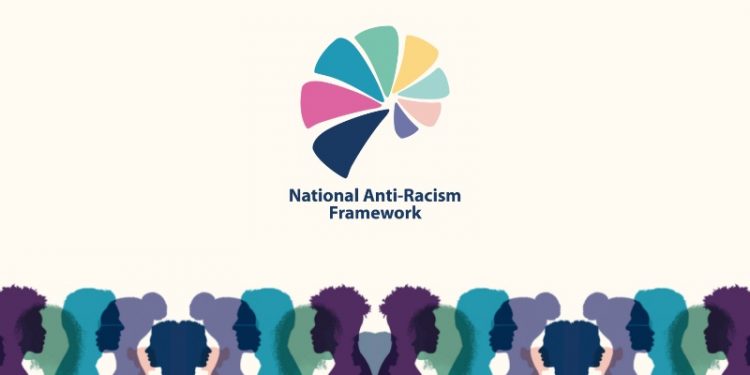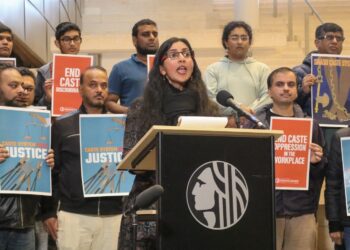The Australian Human Rights commission has recognised ‘caste discrimination’ as a form of racial discrimination in its recently released National Anti-Racism Framework Scoping Report.
In March 2021, the Australian Human Rights Commission released a proposal for a national anti-racism framework.
The AHRC scoping report says, “This was in response to community calls for national action after heightened experiences of racism and racial inequality in recent years, particularly during the COVID-19 pandemic. The proposal contained guiding principles, outcomes, and strategies to begin a national conversation about how to tackle racism.”
From March 2021 to April 2022, the Commission consulted with the public, peak and community organisations, experts, service providers, human rights agencies, and government at all levels on the scope and vision for a framework. In total, more than 100 consultations were undertaken with over 300 organisations. Submissions from individuals made up more than a third of the 164 total public submissions received.
The scoping report released following submissions and consultations has recognised caste discrimination as a form of racism.
CASTE
According to the report, “The Commission heard that race can also be experienced through the category of caste. Though its precise form and content varies with time and place, caste is a strictly codified, socio-religious hierarchical system made up of classes and sub-classes that are ranked based on underlying
ideas of purity and pollution.”
We emphasise that casteism is an intersectional system of discrimination
submission from The Humanism Project, NARF project, May 2021 – April 2022
which includes but is not reducible separately to either of skin colour, religion,
gender, ethnicity, nationality, ancestry/descent, work or occupation. … there is
a need to recognise caste as a protected category in anti-discrimination
legislation and policy.
“This system is hereditary, with caste often assigned to individuals patrilineally, at birth. Casteism is a form of social stratification, found across South Asian cultures and religious communities, and carried into other nations through diasporic movement. It often finds expression by seizing upon racialised, quasi-biological attributes and differences, such as associations of dark skin with lower castes.If an individual member of a caste moves to Australia, for instance, their caste comes with them.”, the Commission heard.
“Even when an individual moves to Australia, the Commission heard the impacts of casteism can still be felt in day-to-day life. For example, a Nepali Dalit man (Dalits form the lowest tier in the Hindu caste system) was evicted from his rental accommodation in Brisbane after the owner, an ‘upper caste’ Nepali, found out that he was a Dalit.Similar experiences can also be found in employment decisions.Casteism also arises interpersonally, expressed through verbal, physical, and online abuse, including violent threats and assault.”
Prominent anti-caste activists have welcomed the action by AHRC to recognise caste discrimination.
Dr Vaibhav Gaikwad of Ambedkar International Mission Australia told NRI Affairs, “I thank the AHRC for recognising caste as a basis for discrimination in the National Anti-Racism Framework scoping report. It is a key starting step in unmasking the inhuman nature of caste discrimination. I am glad to see that the submissions from academics, social justice activists, and several members of Ambedkar International Mission (AIM) Australia and The Humanism Project have made a positive impact on the scoping report. AIM Australia also acknowledges the contribution and support of the Periyar Ambedkar Thought Circle Australia (PATCA) and Sri Guru Ravidasji Sabha (SGRS) in this process. We look forward to the next stage of the framework development.”
Filmmaker and academic Dr Vikrant Kishore, who has authored and edited books on Indian cinema, celebrity culture, and intangible cultural heritage, told NRI Affairs, “We are pleased to see that ‘caste/casteism’ is mentioned and recognised prominently in the Australian Human Rights Commissions’ National Anti-Racism Framework. This is a huge win for the marginalised communities, especially the ones who have been historically discriminated, excluded, and violently suppressed in the name of caste. More than racism, it is the cultural baggage of casteism that has created some of the most significant problems and hurdles for the South Asian marginalised communities. With caste identity (and casteism) gaining ground here in Australia, many are finding this uncomfortable and problematic. Unfortunately, discrimination based on one’s descent continues.”

“An acknowledgement and recognition of caste discrimination based on research-based evidence by the AHRC in its National Anti Racism Framework Scoping report paves way for wider discussion on the issue of caste practices and casteism, and hopefully Australian organisations and educational institutes will now understand the grave danger caste discrimination poses, and not only take this seriously, but include it within its diversity, equity, and inclusivity policy. We would certainly continue to work in this space to create an awareness, and fight any form of discrimination, especially casteism.”, Dr Kishore added.
Dr Haroon Kasim of the Humanism Project, an Australia based social justice advocacy group of the Indian diaspora that had made a submission to AHRC to include caste discrimination in the scope of NARF, told NRI Affairs, “We congratulate our Dalit comrades on this important achievement. We commit to standing in solidarity with them in remedying the harms of historical injustices and discrimination.”
Australia based Babu Gogineni , a prominent anti-caste activist welcomed Australia’s recognition of caste as a form of discrimination as a great step in the fight against it whose victims number in the hundreds millions, especially in South Asia, but which has now spread across the world due to immigration.
The full report is available on the Australian Human Rights Commission website.











